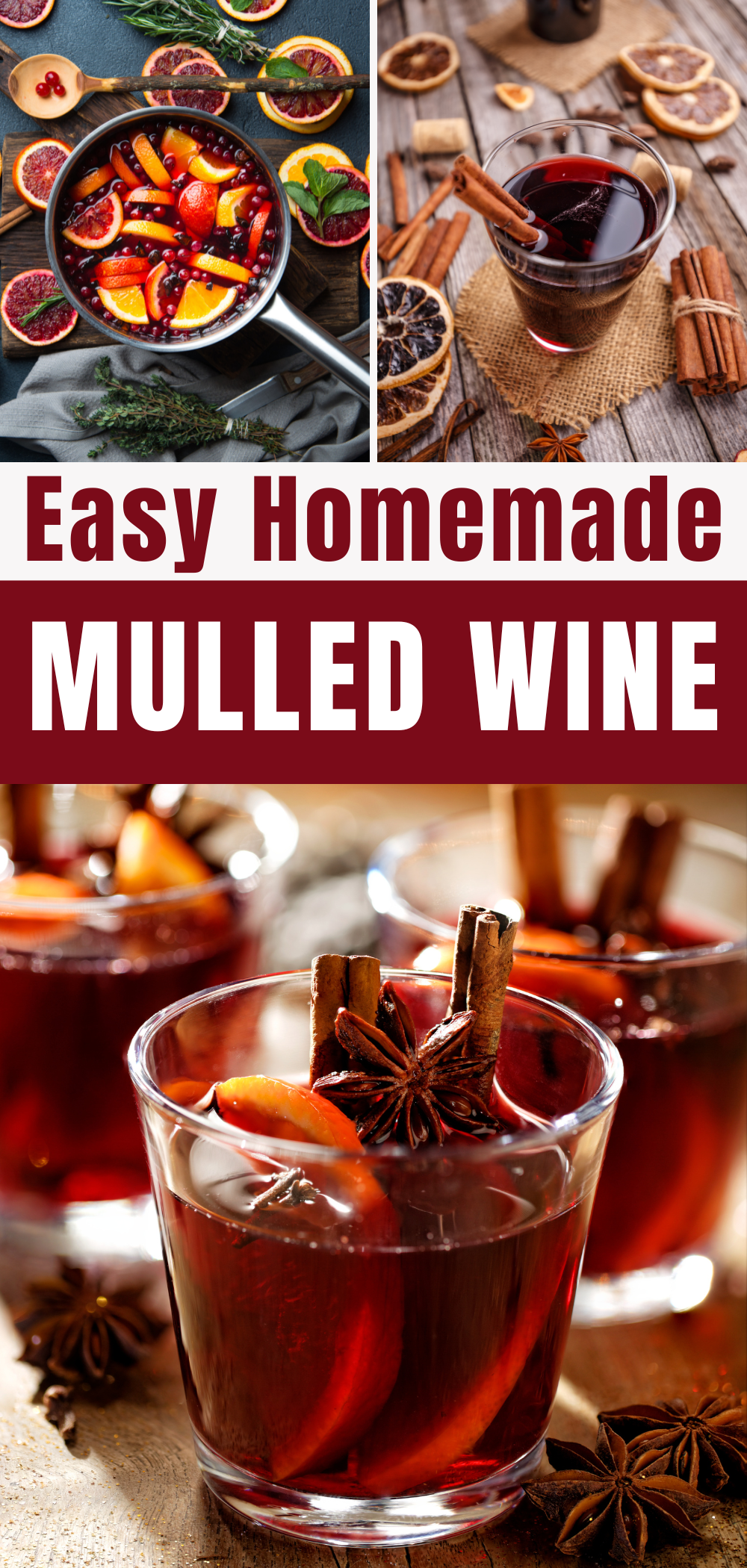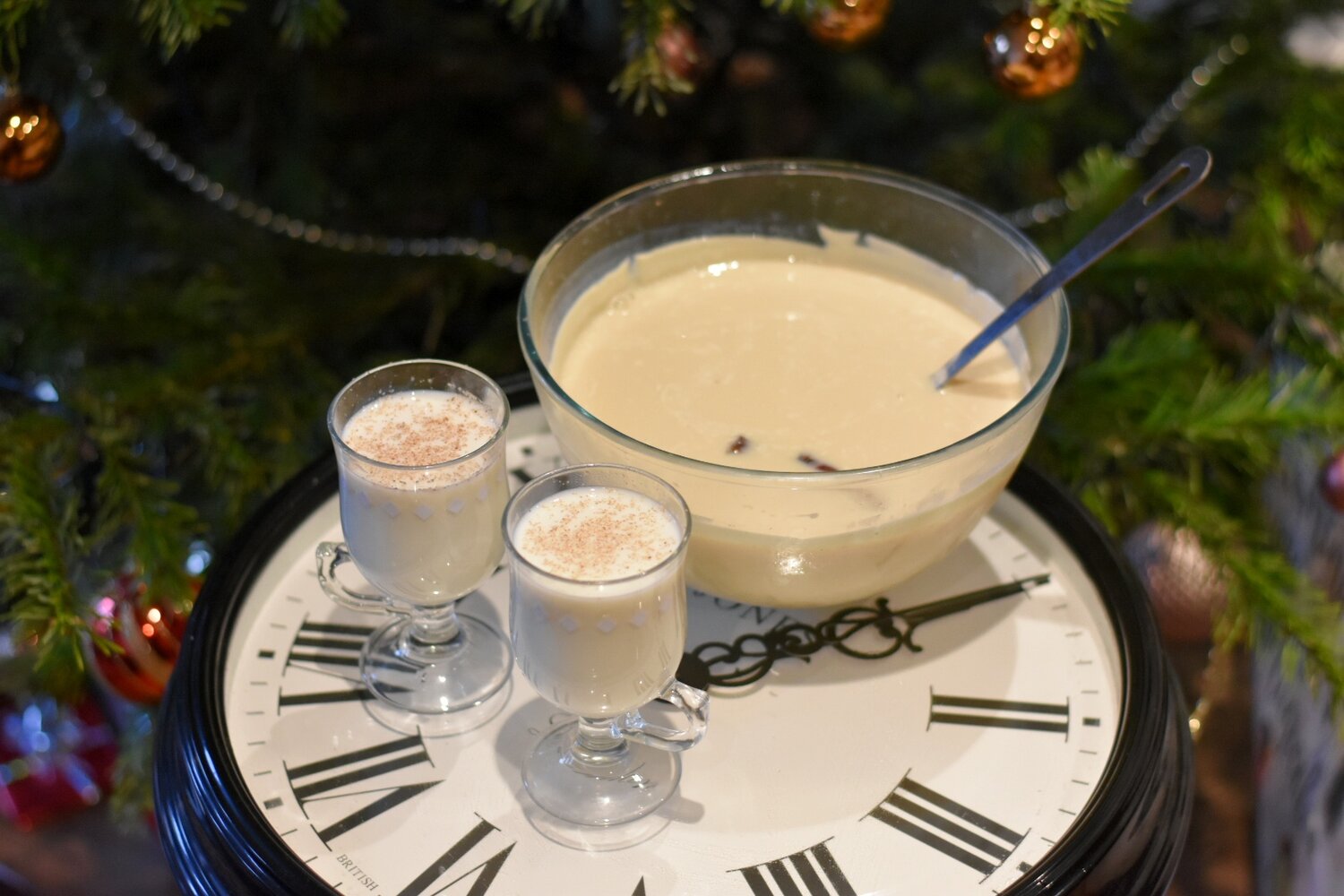Easy Homemade Mulled Wine Recipe
The season of cold mornings, dark evenings and festive joy is once again upon us. But more importantly, it’s the time for mulled wine! I find nothing more comforting during November and December than sitting by an overly decorated Christmas tree, watching tacky Christmas films with a hot glass of mulled wine in hand. But have you ever tried making your own?
Jump to recipe
Throughout this article you will go through the best practices when making mulled wine, the history of mulled wine and why it’s even a thing.
As well as my best ever recipe and non-alcoholic alternatives. Use the Jump to if you want to skip right to my best ever recipe.
Truth be told, during December I can get through a fair few bottles of mulled wine. Whether that makes me a mulled wine connoisseur or just an avid fan you be the judge. Either way, I figured it was only right to share my festive mulled wine recipe with you.
So instead of spending a small fortune on bottles of overly sweet, under spiced mulled wine, you can just make your own!
This specific recipe I’ve developed over the span of about 5 years serving it in multiple bars I’ve personally managed. Now, I’m sharing it with you.
The beauty of homemade mulled wine
Now if you're like me in the way that you get through a fair few bottles of mulled wine every winter, then making your own is a big saving.
You don’t have to break the bank with expensive wine to use as your base. Seems as we will be changing the flavour, any old cheap bottle of red will do the job beautifully.
Cheap Mulled Wine
So instead of spending extra money on pre-mulled wine, just do it yourself. That way you have extra money for gingerbread men, chocolates and buying people gifts. Which speaking of, these articles may just help you in that department;
30 Bartender Gifts for Under £30
Luxury Wine Accessory Gift Guide
But back to this spiced mulled wine. There's also the aspect of being able to change the flavour to your preferences. Prefer your mulled wine on the sweeter side? Add more sugar. Prefer one spice over another. Add more of that spice. You can make this festive mulled wine as spiced or sweet as you want. And that’s pretty cool if you ask me.
Brief History of Mulled wine
Mulled Wine has been around for a very long time. From the Ancient Greeks to the Roman empire, it seems that wherever wine has been made or enjoyed. people have made mulled wine. I don’t blame them.
The Middle Ages
But it was the middle ages when mulled wine really took off. The origins behind mulled wine goes as follows: Wine goes bad. whether it's because of a bad harvest or the bottle has been open for a little too long, exposing it to the elements.
So instead of throwing it out. Because why waste wine? our ancestors would add spices and heat it up to mask the flavour of terrible or oxidised wine (Which is why it’s okay for us to use cheap, low quality wine as our mulled wine base).
In the middle ages wine was healthier to drink than the water and added spices not only masked the flavour of bad wine but doubled up as a medicine.
So remember that next time you have mulled wine (which will hopefully be after reading this) that you’re drinking a part of history as well as having your daily dose of middle aged medicine.
Easy Homemade Mulled Wine Recipe
I’ve done the hard part for you and tried and tasted all the variations of mulled wine I could find (you’re welcome) and came up with the below recipe. However, as I previously mentioned the beauty of making mulled wine yourself, is that you have full control over what you put in it and what it tastes like.
So my recommendation? Use the below recipe to make your mulled wine. After, make notes on what you thought of it. Add more of one ingredient if you preferred it, add less of another if you didn’t. Use it as a base but then change it to create your own speciality mulled wine recipe.
Then enjoy your own signature mulled wine recipe all month long. After Christmas is done and over with, fold your recipe up all neatly and nicely then tuck it away for next year. So year after year you can look forward to your very own festive mulled wine recipe.
Oh, and for the full printable recipe card, just keep on scrolling to nearer the bottom of this page.
Ingredients for Mulled Wine
The peels of one medium orange
Make sure your oranges are wax free. If you can’t find any wax free lemons, give them a good scrubbing to get rid of the wax.
The juice from the orange you have just peeled
You could use store bought juice, but why bother when we have just peeled some oranges. That means as well as being middle aged medicine, this is also sustainable.
100 grams of caster sugar
Once you’ve made it once, try swapping the caster sugar for brown sugar and seeing which one you prefer. Brown sugar in mulled wine has a deeper, richer, almost toffee flavor, whilst white sugar is more clean.
700ML Red wine
Keep scrolling for more tips on the red wine.
6 Clove
Some people hate clove, some people love it. This should be your first section to change if you’re creating your own mulled wine recipe.
2 Cinnamon sticks
2 Star Anise
1 Whole nutmeg
The above 3 spices is my standard for any festive, winter, or Christmas drink. As a side note, they also work great as a base for pumpkin spiced syrup.
1 Vanilla pod
We don’t want a massive hit of vanilla, but that little bit will sure help give a sense of sweetness.
Method for making mulled wine
1) Add the cloves, cinnamon sticks, star anise and half the nutmeg grated to a pan. Toast on a medium heat for 5 minutes then add the orange juice, orange peels and sugar.
2) Cut the vanilla pod lengthwise to release the vanilla beans, then add the whole thing to the pan
3) Add enough wine to cover the sugar and bring to a boil whilst stirring to dissolve the sugar.
4) Once the sugar has dissolved, allow it to simmer for 5 minutes, This will create a mulled wine syrup as a base before we add the rest of the wine.
This process of only adding part of the wine first will draw out more of the spice flavours without having to reduce alcohol content to much.
5) Add the rest of the wine to the pan, Reduce the heat to low/medium. At this point you can adjust the recipe to suit your own preference. Have a taste, want a sweeter wine? add more sugar. Want more spice? Then add them!
6) Allow the mix to simmer for 5 minutes, or until the wine is hot enough to serve, but not boiling.
7) Ladle into heat proof glasses, Garnish with orange wheels, speared with cloves and a cinnamon stick.
Garnishing Mulled Wine
For garnishing mulled wine, the most simple is to stick a cinnamon stick inside. If you prefer a sweeter sensation go for orange.
What I like to do is cut an orange in half, then stick cloves all the way around. After I’ve done that, I slice my wedges which will be perfectly speared with cloves so it looks like this…
However, keep in mind because this is a hot drink, whatever you use to garnish your mulled wine, is likely to infuse. So if you stick some cinnamon in your glass, it’ll slowly get more and more spiced. Orange, it’ll slowly get more and more sweeter.
You can always leave your mulled wine without a garnish. Truth be told I only garnish mulled wine for parties and pictures. Every other time I leave it ungarnished.
What wine should I use to make Mulled Wine?
When it comes to mulled wine, I’m a strong believe that the cheaper the wine the better. We’re looking to heat up and completely change the flavor profile of our wine. So no need to waste time with expensive wines.
As for the grape varieties. I see no reason why this should matter. Sure, a Cabernet sauvignon will create a slighter richer wine then say, a Merlot. But the difference is so small I wouldn’t get to bothered by it.
Traditional mulled wine
Mulled wine is so versatile that you’ll find a lot of different recipes calling for a lot of different ingredients on the web. This recipe that we’ll use today is for Traditional Mulled Wine. As I’ve mentioned throughout, you can change it however you like but at its basic form, it’s completely traditional.
mulled wine without brandy
One of those varieties you see a lot is mulled wine with brandy. Our recipe doesn’t include brandy because as mentioned, this is a traditional mulled wine.
That being said, if you wanted to add brandy, I’d recommend 50ml per 750ml of wine.
The pro’s to this other then the taste of brandy and the higher ABV, is that if you plan on bottle your wine, adding brandy will help preserve the shelf life of your Mulled Wine for longer.
How long will my homemade mulled wine last
Bottled and stored in a refrigerator, this mulled wine will last about 2 weeks.
Mulled wine with the addition of 50ml of Brandy will last around 3 weeks.
The above are based on my experiences. Storage bottles and fridge temperatures differ so please do your own research and experimenting. If it looks bad, or smells bad, assume it’s gone off.
Similar Recipes
Once you’ve nailed this recipe, the next must try is my mulled cider recipe. It’s very similar in preparation and ingredients so you should get through the recipe with ease.
After that, I’d recommend my Spiced Mulled Wine Poached Pears.
It’s such a delicious festive dessert. In fact, It’s my personal favourite! And the best thing is that in order to make them, you need to make this mulled wine. So if you’re already planning on making this homemade easy spiced mulled wine, then you only need to pick up some pairs and you’re ready to make mulled wine poached pears.
Other then that, check out these amazing recipes;
Homemade Mulled Wine Recipe

Easy Homemade Mulled Wine Recipe
Ingredients
Instructions
- Add the cloves, cinnamon sticks, star anise and half the nutmeg grated to a pan. Toast on a medium heat for 5 minutes then add the orange juice, orange peels and sugar.
- Cut the vanilla pod lengthwise to release the vanilla beans, then add the whole thing to the pan.
- Add enough wine to cover the sugar and bring to a boil whilst stirring to dissolve the sugar.
- Once the sugar has dissolved, allow it to simmer for 5 minutes, This will create a mulled wine syrup as a base before we add the rest of the wine.
- This process of only adding part of the wine first will draw out more of the spice flavours without having to reduce alcohol content to much.
- Add the rest of the wine to the pan, Reduce the heat to low/medium. At this point you can adjust the recipe to suit your own preference. Have a taste, want a sweeter wine? add more sugar. Want more spice? Then add them!
- Allow the mix to simmer for 5 minutes, or until the wine is hot enough to serve, but not boiling.
- Ladle into heat proof glasses, Garnish with orange wheels, speared with cloves and a cinnamon stick.
Notes
For a non-alcoholic mulled pomegranate juice recipe, keep on scrolling.
Nutrition Facts
Calories
173.59Fat
0.68 gSat. Fat
0.16 gCarbs
36.37 gFiber
1.98 gNet carbs
34.39 gSugar
31.99 gProtein
0.83 gSodium
2.47 mgCholesterol
0 mgThe nutritional information shown is an estimate provided by an online nutrition calculator. It should not be considered a substitute for a professional nutritionist’s advice. See our full nutrition disclosure here.
Going sober this Christmas?
With a lot of people choosing to go sober this year. You may be wondering if that means it's the end of mulled wine for you. I can confirm. It is not!
Just because you’re not drinking, does not mean you can’t enjoy a glass of warm spices that fill us with December comfort. Below I have added two variations on the above mulled wine recipe that you can make at home.
Non-alcoholic Mulled Wine Recipe
There are multiple options for the non-alcoholic wine lover in today's market. Non-alcoholic red wine has gone beyond sweetened fruit juice. Some of today's non-alcoholic red wine is nicer than a lot of low quality red wine most places sell.
So for this recipe we are going to be simply replacing red wine with non-alcoholic red wine in the recipe above.
We’re going to follow the same steps as above with just a few minor changes.
Change 1: Instead of using 100 grams of sugar, we’re going to cut that right down to 50 grams. As non-alcoholic red wine tends to lack that kick meaning the sugar can be overpowering.
Change 2: Whilst in the first recipe, we added just a dash of red wine at first, then later added the rest. We are not going to do that this time. With no alcohol in the mix, there's no worry of burning off the alcohol by adding to much red wine.
So once your sugar has dissolved into your spice mix, add the whole bottle of non-alcoholic red wine.
Mulled Pomegranate Juice Recipe
Mulled pomegranate juice is something revolutionary, i’m telling you now. I originally created this recipe in an attempt to make a kind of mulled pomegranate gin and prosecco cocktail. However, the mulled pomegranate juice was just so delicious, with so many similarities with mulled wine that I just decided to serve the pomegranate juice on its own as a non-alcoholic mulled winter warmed alternative.
To keep things as simple as possible, I’ve kept the recipe as similar as I can to the previous mulled recipes. However, a few changes do need to be made.
Ingredients
The peels of one medium orange
2 Sprigs of rosemary
700ML Pomegranate juice
6 Clove
2 Cinnamon sticks
2 Star Anise
1 Vanilla pod
1 Whole nutmeg
Method
Add everything apart from the pomegranate juice to a saucepan on a medium heat for a few minutes, just to toast the spices.
Add 200 ml of the pomegranate juice and heat for 5 minutes until you’re kitchen smells of mulled spices.
Add the rest of the pomegranate juice and simmer on a low heat for 10 minutes. Take off the heat, remove the rosemary and leave the saucepan to one side for 2 hours.
This will let the spices and orange infuse even more.
Strain out the spices and orange peels. Add your now infused pomegranate juice to another saucepan and heat up for 5 minutes then serve warm.
Garnish with a cloves pierced orange and sprig of rosemary.
Search Drinks
Cocktails, Non-alcoholic, Wine, Coffee, Drink guides, Techniques, Fermentation
All Recipes
Hi, I’m Cameron, guv’nor of Smartblend. If you liked this then you’re in luck, I have a bunch more recipes like it. I share only vegetarian and pescatarian food recipes, cocktails, and drink guides with a sprinkling of wellness and mindful drinking. If that sounds like you, then stick around!



























